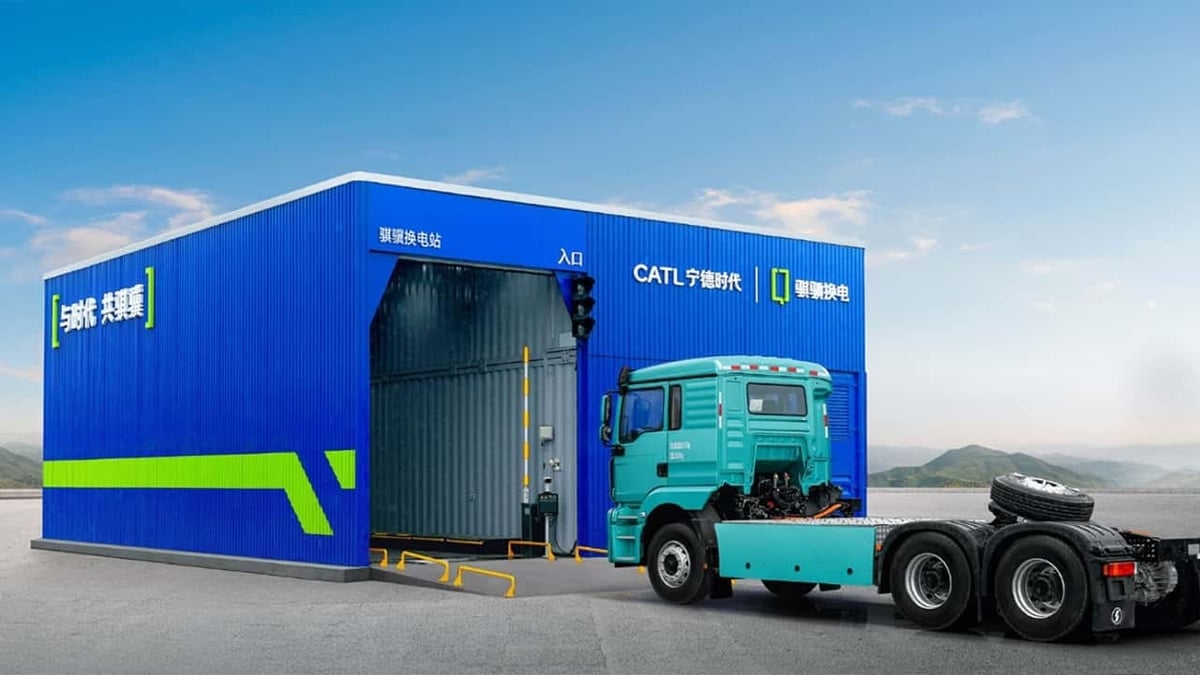August 31, 2025 | 11:36 GMT +7
August 31, 2025 | 11:36 GMT +7
Hotline: 0913.378.918
August 31, 2025 | 11:36 GMT +7
Hotline: 0913.378.918

China has become a global leader in electric cars and car tech, with one of the highest personal EV adoption rates in the world. Photo: InsideEVs.
The boom in electric truck sales in China follows that of electric cars and the rise in recent years of LNG-powered heavy trucks. Those factors, combined with slowing economic growth, have stifled its oil consumption growth.
Sales in the world's biggest market for new energy trucks are estimated to have risen 175% year-on-year to 76,100 in the first half of this year, or about a quarter of new truck sales, according to consulting firm Sublime China Information (SCI). Electric models, still mostly used for short-haul runs in ports, mines or steel mills, accounted for over 90% of that increase.
The rapid pace has surprised analysts who have revised down diesel demand forecasts as a result and brought forward their predictions for a peak in Chinese oil demand.
SCI's analyst Xu Lei said he cut the firm's China diesel demand expectations by 1%-2% given the boom in electric truck sales.
"The surge in electric heavy trucks was a surprise and has become a new factor accelerating China’s oil consumption to peak, most likely this year," said Ye Lin, vice president at Rystad Energy, who had previously expected a 2026 peak.
The transport sector, which burns about two-thirds of all diesel in China, will use 40% less by 2030, cutting overall diesel consumption by about a quarter compared to 2024 levels, according to Rystad.
Diesel consumption this year is forecast to fall by 11.3 million tons, or 6.3%, on par with last year's drop, according to SCI.
After more than six years behind the wheel of a diesel truck, Li Shuai, who drives for a cement plant in Hebei province near Beijing, switched to an electric truck six months ago.
"Charging infrastructure has improved noticeably in the past half year, making things much more convenient,” Li, 38, said. "It is even possible to drive an empty truck more than 2,000 km from Beijing to Yunnan to pick up goods without worry."
The rapid buildup of charging infrastructure, primarily through industrial corridors, is underpinning adoption, although charge times that can stretch to 90 minutes and limited charger availability in some areas remain issues.
Teld, an EV charging infrastructure provider that has built more than 2,400 truck charging stations across China, officially opened an 800 km corridor in March linking Shanxi and Shandong provinces, a key route through the country’s coal-producing region.
At a charging station next to the Hebei cement plant, car and truck chargers sit side by side in the dusty lot. Owner Yongji Liu had originally only planned to service EVs but said "the electric truck market is growing so fast that we also installed chargers for trucks".
The booming market for electric trucks is partly due to cheap electricity and government subsidies introduced last July of up to 95,000 yuan ($13,264) for new vehicles, analysts and truckmakers said.
While diesel trucks are cheaper upfront, higher fuel costs make them more expensive after a million kilometers of driving.
Once fuel is included, diesel trucks cost about 2.25 million yuan ($314,000) at the million-kilometer mark, roughly 10% more than LNG trucks and 15% more than electric trucks, according to GL Consulting.
Rising fuel costs have also eroded some of the price advantage enjoyed by LNG trucks, which along with limited refueling stations in some regions, have hindered their growth, said SCI analyst Wang Neng.
SCI forecasts LNG truck sales to hit around 92,000 units in the first half, down 15% from a year earlier, although the surge in electric adoption is more than offsetting the impact on diesel consumption.
China's second-best-selling electric truck maker Sany (600031.SS), opens new tab says the growth potential for electric trucks is greater than for passenger EVs because lower operating costs bolster the profitability of corporate users.
"We expect electric heavy trucks to account for 70% to 80% of new sales within as little as two to three years, driven by lower operating costs and more comprehensive charging infrastructure," said Zhaoting Yue, SANY's vice president of international marketing.
($1 = 7.1625 Chinese yuan)
(Reuters)
(VAN) This year, cassava export prices have fallen sharply due to an abundant supply. However, exports of cassava and cassava products have increased significantly, offsetting the decline in prices.
(VAN) The key durian growing area of Central Highlands has implemented various solutions to improve durian quality, aiming for sustainable exports, brand building, and international market expansion.

(VAN) Following the successful shipment of fresh lychees to the U.S., Vietnam MAE will support Dragonberry Produce in expanding exports of Vietnamese passion fruit and guava.
/2025/08/27/3952-2-212535_479.jpg)
(VAN) At this time, durian, longan, rambutan, and Thai custard apple orchards across the western districts of Gia Lai province are entering the harvest season, bringing joy and excitement to local farmers.

(VAN) The VIFA ASEAN 2025 exhibition gathers more than 200 domestic and international companies, thereby fostering the development of furniture and handicraft trade networks between Vietnam and ASEAN.
(VAN) (VAN) Vietnam’s pangasius export has been growing steadily since the beginning of the year and will maintain this growth momentum in the final months of the year.

(VAN) Carefully selected mung beans, crafted by skilled hands, have been transformed into cakes that meet the national 5-star OCOP standard, ready to reach international markets, carrying with them the story of Vietnam’s agricultural essence.